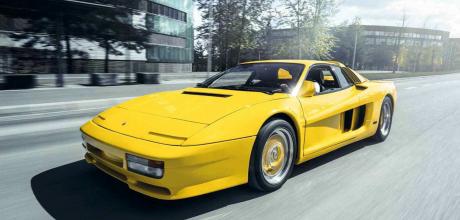1988 Ferrari Testarossa GTR by Gemballa
It's rare that someone sees a Ferrari Testarossa and thinks it needs to be more outrageous. But one man did, and the GTR by Gemballa was the result. Words Matthew Hayward. Photography Stian Furuseth.
THE SECRETS OF MY EXCESS GEMBALLA TESTAROSSA
The Testarossa was Ferrari’s ultimate 1980s supercar. Gemballa took it a stage further… How Gemballa turned an iconic Ferrari into the ultimate expression of 1980s excess
Before we get into the story of this unique, unashamedly over-the-top 1980s supercar, let’s get a few of the cliches out of the way. Greed was good, lunch was for wimps and we shouldn’t forget to mention Crockett and Tubbs. As unfashionable as it quickly became, the ‘1980s excess’ culture provided the fuel for some very interesting couture choices — and the cars that best represented it were to many the ultimate expression of wealth and individuality. Bodykits, wide-arch conversions and big spoilers were often fitted to the most elegant and expensive cars merely to stand out from the crowd. Even so, it’s hard to imagine that anybody could look at a Ferrari Testarossa, and think ‘That could do with being spiced up a bit...’
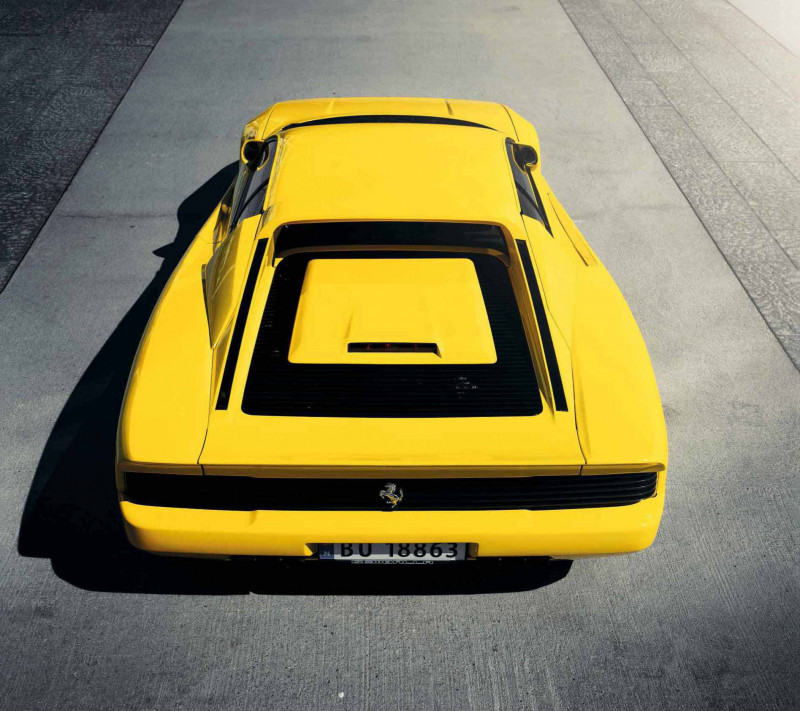
Yet that’s exactly what USA-based entrepreneur Bruce Selig thought when he commissioned Gemballa to create a one-off based on the flat-12 Ferrari. Realising that this would be a showpiece for his company’s talents, Uwe Gemballa was more than happy to go wild with his first Ferrari, This was a company synonymous with modifying Porsches after all, so here was an opportunity to show the world that Gemballa could do anything.
As it was based in Leonberg, near Stuttgart, it’s hardly a surprise that Gemballa gravitated towards Porsche. Starting back in 1979, he made a name for himself by carrying out bespoke interior modifications on Porsches and BMW's. As well as providing extremely high-quality retrims, the German tuning firm began experimenting with state-of-the- art in-car technology. Gemballa became a registered name in 1981, when the company also released several aerodynamic packages for the 911, 924 and 928. It claims to be the first company to have fitted LED instruments to a car.
This Testarossas transformation began in early 1988, taking a little over six weeks. Uwe Gemballas interpretation of the Ferrari supercar would feature a comprehensive package of cosmetic and technological upgrades, yet Selig requested that the car should remain mechanically standard to make servicing feasible at Ferrari garages.
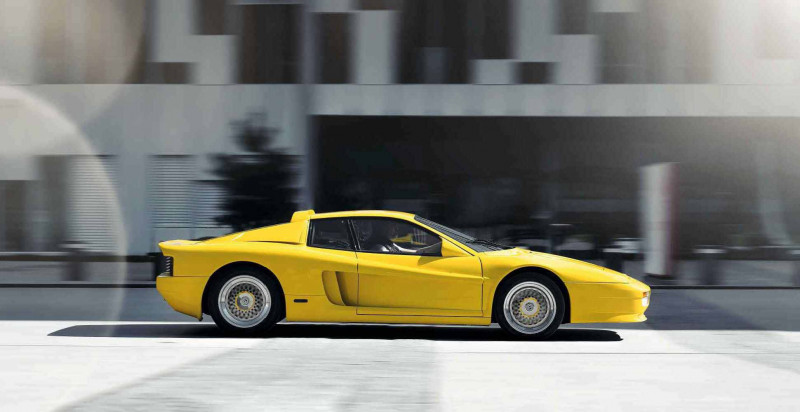
It begs a question, though: why modify a Testarossa? In many ways, it actually makes a lot of sense. If you wanted a wild Italian supercar, by this point the Countach was already a bulging, ferocious, massively over-the-top car from the factory. Ferrari’s flagship was a more civilised, more refined super-GT — fitting much more into the mould of other luxuriously appointed modified European cars in the high- end tuning scene. Launched in 1984, it represented a huge evolution of the Berlinetta Boxer. Carrying over the mid-mounted flat-12 layout from the BB gave the Testarossa a uniquely low and wide stance. With 385bhp, performance was effortless — with a sub-six-second 0-60mph time and a top speed around 180mph. Those 12 cylinders, albeit with a wider angle between them than in the front-engined cars of old, plus an open-gated five-speed manual shift, meant it had all the makings of a traditional Ferrari, though a radical and fresh look from Pininfarina set the template for Maranello’s next generation.
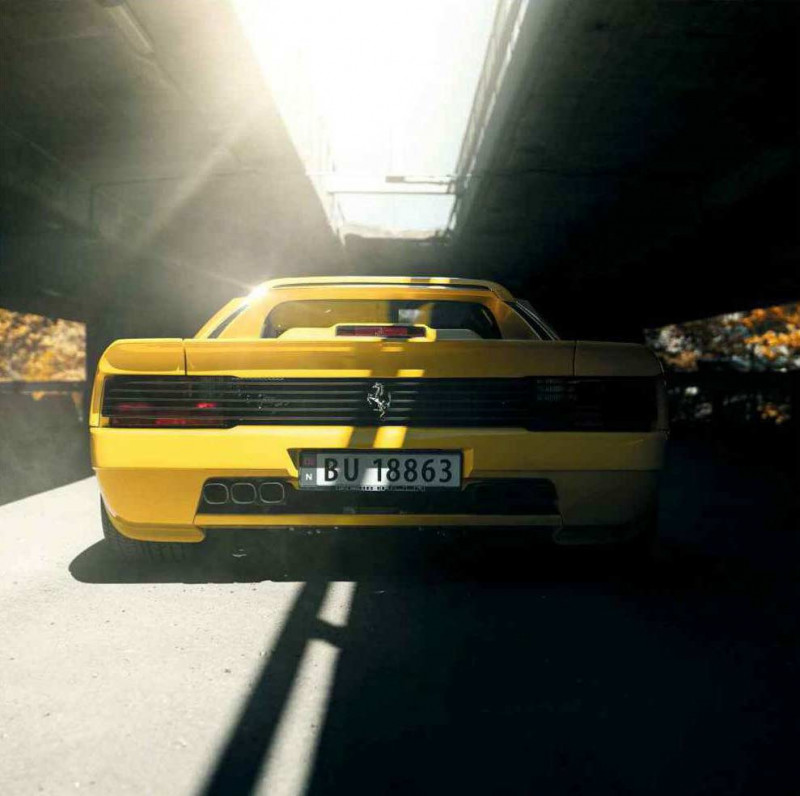
It sits at 1976mm across the beam, so you might think the standard Testarossa is plenty wide enough but Gemballa pushed it even further, with extended rear wings adding a full 120mm to its hips. Door extension panels were added, too, with which came perhaps the most controversial change: the removal of the TRs iconic side strakes. If anything, it gives the TR a slightly more modern look, aided by the unique colour-coded front and rear bumpers. Streamlined door-mirrors and a roof-mounted rear spoiler complete the aero upgrades. As with other Gemballa models, the exhaust features a six-tip exit, There are plenty of beautiful little touches throughout, such as the slightly larger engine air intakes and a third brake light integrated into the engine cover. To finish it off, a set of custom 17in centrelock BBS Racing alloy wheels was fitted, these two-piece wheels are polished, with their centres finished in Canary Yellow to match the car’s paintwork.
Unlike many other companies offering wild modifications for exotic cars, Gemballa was highly respected for its workmanship, and this shows on the inside more than anywhere else. Almost everything was retrimmed in black water buffalo leather, with the new electric Recaro ‘Type C’ seats given yellow piping. A top-of-the-range Pioneer stereo was installed in the centre console, with all-important cassette holders tucked next to the seats in the door card. Fairly standard stuff? Then check out the 7in TV screen mounted on the dashboard. Not for watching episodes of Miami Vice but for displaying a feed from the rear-mounted camera. Commonplace today, but a world-first when pioneered by Gemballa on an earlier project in 1986. Gemballa was also the first to make the multifunction steering wheel a reality, as seen here, allowing the radio to be controlled from buttons on the wheel.
How much did all this come to? Selig had, in effect, written a blank cheque, and the price totalled a staggering $290,453 — when the base tag for a Testarossa in the USA was around $94,000. It was completed just in time to be exhibited by Gemballa at the 1988 Geneva motor show, before being shipped to its owner in Miami a month later.
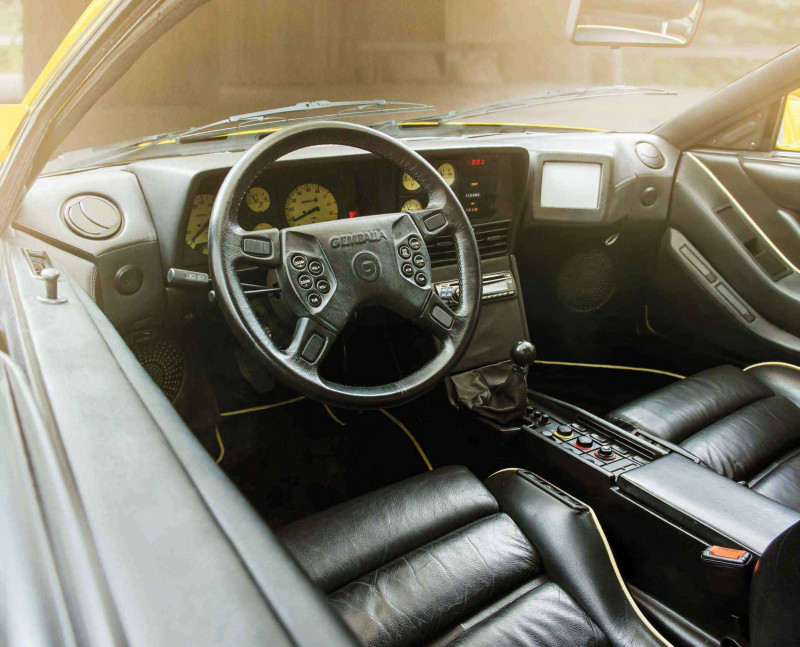
Selig had made his money in the meat and seafood industry but was also the owner of several New Jersey corporations, among them Exotic Bodies Inc and Scotts Limo and Leasing. With a large fleet of vehicles, including Gemballa-built Porsches, Selig would use the Testarossa to promote many of his businesses, and it wasn’t actually registered for road use — nor even driven — for the first few years. As well as appearing at various events, such as the New York Auto Show, Selig’s Exotic Bodies business leased out the TR, along with many of his others, for photoshoots and events.
It was utterly pampered in those early days, and servicing was carried out on-site at the hangar where all of his cars lived. It remained as one of Selig’s prized possessions until 1999, when it was sold to Florida real estate millionaire Peter Wolofsky, who owned Auto Toy Store in Boca Raton, Florida. At that point, the car had covered only 7340km. It passed to Rolls-Royce collector and dealer Donald G Meyer in 2005, having covered a little over 1000km more. Yet again, the Gemballa Testarossa was used sparingly, but frequently put on show at local New Jersey car shows.
A move to California was soon on the cards, as the Testarossa found a home with joint fourth owners Archie McLaren and Nicholas Stephen Patin. McLaren was a car and wine connoisseur, and his use of the car differed very- little from that of previous owners: driving it into Santa Barbara and Monterey for cars-and-coffee mornings. By then it was serviced regularly by Newport Beach Ferrari, and G and K Auto Conversions replaced the very special Gemballa exhaust with a standard system to comply with the strict California emissions regulations.
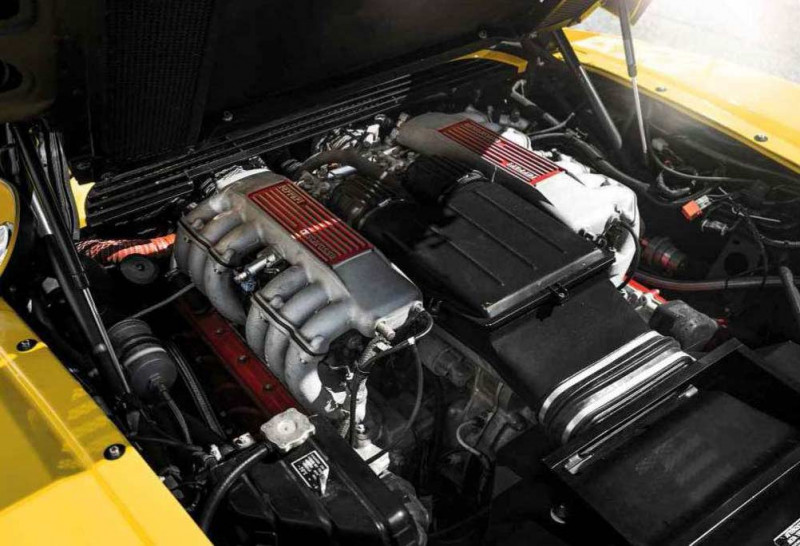
In 2015-2016, the Gemballa Testarossa was on display at the Murphy Auto Museum in Oxnard, California, where it was spotted by its current custodian, Johan Sandberg, The US-trained Swedish plastic surgeon fell in love with it straightaway: ‘I really love ’80s tuned cars, and I saw this one on display in the museum so I sent them an email and asked them if it was for sale, This guy said he would contact its owner, and just like that I started emailing and talking to the owner. He was a well-known wine connoisseur in California. When I went to Texas for some work obligations, I asked to come over and have a look at it.
‘When I came over to the place where he stored it, a hangar in Santa Barbara, my jaw dropped. It was a stunning environment to see the car. When you see this car in pictures, it’s hard to capture the width. I was like “I gotta have it!” So I saw it there, and we talked, and we got to an agreement. Funny little guy, he was like three apples high, very well- dressed and had a beret, and could fit into the car like nothing. I’m 6ft 4in, and he was like, “You’re going to have an issue, my friend!”
‘He was totally energetic. Unfortunately he passed away shortly after I bought the car, but otherwise he would have been a great friend. If I ever wanted a good wine suggestion, he would write me an email. Quite a character. I think he was fine with me having the car because it was going to a nice home, and didn’t end up with someone changing the wheels or that kind of stuff. I keep its character intact.’
Archie McLaren had turned down an offer from Uwe Gemballa himself to buy back the car directly in 2010, shortly before his untimely death. Gemballa offered a six-figure number to buy it for his own museum, and McLaren stated at the time that he wouldn’t sell it for less than $1 million. Gemballa politely turned down the offer.
Sandberg imported the GTR into Norway, and it has since been back to Gemballa in Leonberg, as well as being mechanically restored by Ferrari specialist Autoxo Sport AS in Oslo. Sandberg continues: ‘I bought it in 2017, and there was nothing really wrong with it. Basically what I’ve done is to update everything mechanically, and to give it a full service to keep it totally up to date.
‘There are still some small things that I’m going to fix, but it’s pretty much almost untouched from original. You can see on the leather that it’s not totally new, but otherwise it hasn’t really been used. You can tell it was a show car for the first few years, The fitment of all the panels is excellent; and the paint is all original. It just looks stunning.’
The fact that this car has survived in such good shape is one things but it’s quite astonishing that it has retained almost all of its original parts. As we know, the unique Gemballa exhaust had to be replaced to meet California rules, but Sandberg says: ‘When I saw that it had a Magnaflow exhaust, I was really disappointed because I wanted those triple exhausts, The owner said he had an old exhaust in a package; “I’ll send it to you,” he told me, and when I opened it I was like “Yes!” I was so happy to see it. I could see that Gemballa had really put a lot of work into it. It was hand- welded and, now it’s fitted, it sounds great. I was really happy to see it wasn’t lost. Unlike some of the other Porsche-based Gemballas, which sometimes featured blind pipes, all six of the pipes actually work.’
Like the previous owners, Sandberg has used it on the road sparingly: ‘It’s crazy wide, so watching it squeeze into the transporter is gut-wrenching as there are absolutely no spare parts available. You can’t see anything out of those rear-view mirrors either! You see the hips of the car, but that’s pretty much it, so that camera comes in very useful.’ As we put this issue to print, the Gemballa Testarossa is actually returning to Leonberg to have a few of the finishing touches completed, which had been delayed due to the pandemic restrictions, ‘The camera is not working at the minute, and they say they can fix it. I want the original one, as it has the original screen, here’s an electrical circuit that needs to be fixed, which is a very specialist job.’
We all love cars for different reasons, but it’s clear that Sandberg has a particular affliction for Gemballas. ‘They’re outrageous cars, and they were the peak of that time. I love those 1001 SELs with the crazy gadgets and wine coolers, and I also have a Gemballa Porsche 928 in restoration. People spent buckets of money on these cars. Some have been well-kept like this, while many others have not, but they were all gems to their owners. Recently I think there has been more interest in this area, but I think the tuned 1980s cars have a bit of a revival to come.’
Of the two cars built by Gemballa, this one is the only complete survivor, The second car was fitted only with the external bodykit, and was reportedly returned to standard spec later in its life. To date, the only other Ferrari model touched by the company is the one-off Enzo-based MIG-U1.
As a company, Gemballa focused mainly on its bespoke Porsche-based models, such as the Avalanche, Cyrrus and Mirage into the 2000s. The automotive world was rocked by the murder of founder Uwe Gemballa in 2010, but the company lives on today thanks to petrolhead investor Steffen Korbach, who bought the name and rights to the company that same year, This incarnation of the business has retained much of the expertise that made the 1980s Gemballas so exciting. As we can see with this car, Gemballa is keen to keep its history alive, and offers restoration services for its classic models, too.
Its looks are absolutely out of this world but it’s more than just eye-catching, The Gemballa GTR represents the peak of 1980s extravagance, and to see it so beautifully preserved brings a wild period of automotive history to life.
Clockwise, from above In profile, it’s still a Testarossa — only with the Testarossa’s most controversial feature removed; 6ft 4in of Swedish plastic surgeon fits snugly; engine is in standard tune — but when the standard engine is a 4.9-litre flat-12, that’s fair enough.
‘How much? A staggering $290,453 — when the base tag for a Testarossa in the USA was $94,000’
Clockwise, from main image Gemballa’s steering wheel features an early application of remote switchgear, while the screen for the rear-mounted reversing camera necessitated a redesigned dashboard; the camera is mounted in the rear screen; instruments treated to colour-coded faces; Gemballa exhausts are arrayed in two banks of three; two-piece cross-spoke wheels couldn’t be more 1980s
Far left and above Gemballa's transformative work is at its most obvious from the front three-quarter: witness the full-depth body-coloured bumpers, roof-hoop spoiler — and the missing side-strakes! It's 120mm wider, too.
TECHNICAL DATA 1988 Ferrari Testarossa GTR by Gemballa
- Engine 4943cc flat-12, DOHC per bank, 48-valve, dry sump, Bosch K-Jetronic fuel injection
- Max Power 385bhp @ 6300rpm
- Max Torque 354lb ft @ 4500rpm
- Transmission Five-speed manual, rear-wheel drive
- Steering Rack and pinion
- Suspension Front and rear: double wishbones, coil springs, telescopic dampers, anti-roll bar
- Brakes Vented discs
- Weight 1650kg (est)
- Top speed c180mph
- 0-60mph 5.7sec


